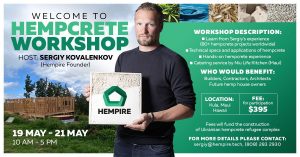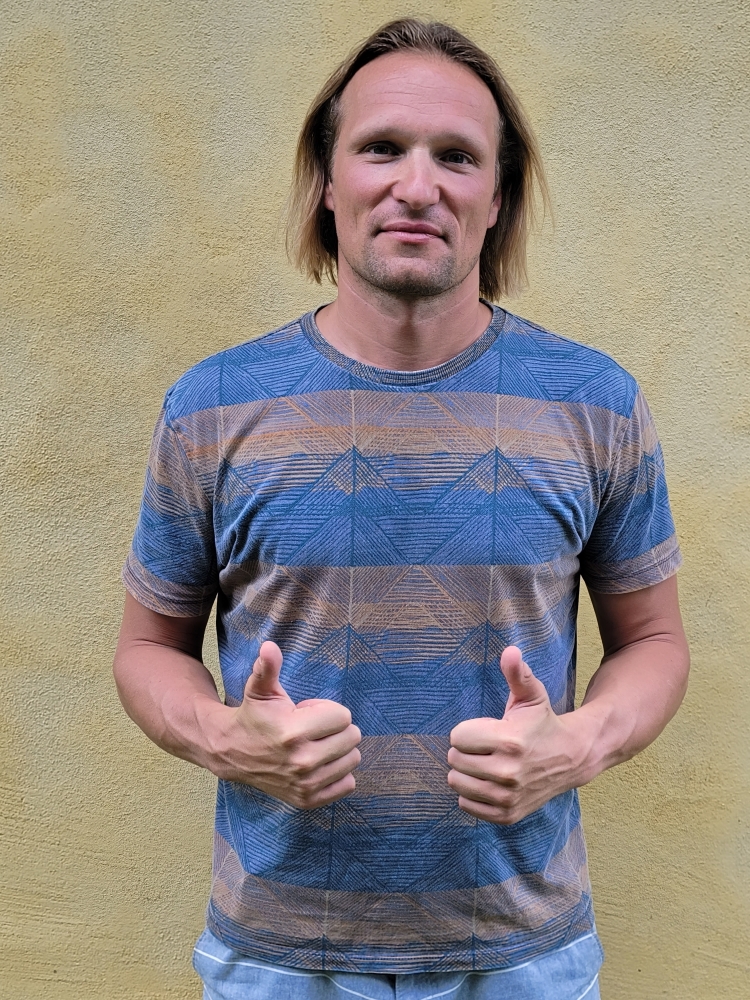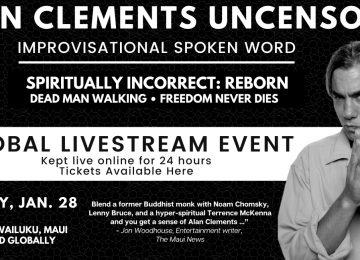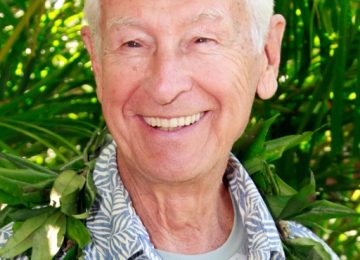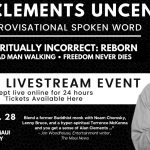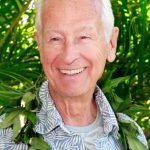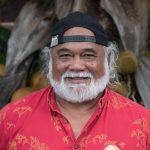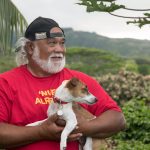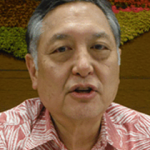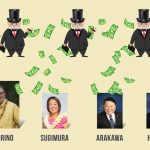Ukrainian Sergiy Kovalenkov is on a mission to change the world – with hemp – the building variety. Trained as a civil engineer, he’s one of the world’s most respected and knowledgeable hemp builders.
One day he had an epiphany that conventional construction methods were creating toxic home environments, and the clean, healthy future involved carbon negative hemp houses. “When I first saw the hempcrete technology, it was a Eureka moment,” Sergiy says. “This is the future. It was a life-changing event because I realized that I was doing many things wrong before that. I had never questioned the toxicity of materials or how long they last. Hempcrete changed my perception of the construction industry overall.”
Sergiy will be on Maui May 19-21, leading a hempcrete building workshop where participants will have a hands-on experience helping construct a new home with hemp. A portion of the proceeds will benefit a hempcrete refugee complex in Ukraine.
Hempcrete, made from industrial hemp stalks mixed with lime and minerals, is a kind of miracle product. A carbon storing material that absorbs CO2 from the environment, it resists mold, fire and pests, and it blocks EMF radiation from Wi-Fi signals, smart meters, etc.
Ask Sergiy about hemp’s marvelous properties and he explains, “first thing it’s a biomass that is produced by sequestering carbon dioxide, so it’s a big carbon sequestrator. Right now there is a lot of commotion about the climate change, about carbon emissions, and the construction industry is the biggest emitter of carbon dioxide on the planet. Between 30 to 40 percent of all carbon emissions comes from the construction industry, and 10 to 15 percent of construction products get thrown out into the dumpster. That’s just a regular waste even if you’re building a brand new house, so the whole thing is just wrong.
“The thing about hemp is it does not require pesticides to grow. It needs some fertilizers and plenty of sunlight and water, and it can grow in many different places around the world. Scalability is the biggest factor for any technology, so just understanding that you know people can grow it in New Zealand, Alaska, Africa, Latin America, China, Europe is giving it a big advantage over other agricultural crops. You can use different types of biomasses for this technology, but because of the porosity, porous structure of the hemp hurd, in a core particle of the hemp stem, gives it an amazing insulation value once you mix it up and prepare a hempcrete mix with it.
“Just like Jack Herer mentioned in his book (‘The Emperor Wears No Clothes’), they took an evaluation of how much trees grow in 20 years before they get cut down and how much cellulose one acre of trees can produce, and they take this similar amount from the same lot where they would be planting hemp for 20 years. You would receive four times more cellulose in comparison to the trees, the forest. So you’re not cutting any trees that some times take centuries to grow up. You’re not depleting the soil from the essential minerals. You’re not using pesticides, you’re not poisoning the soil, and the physical and chemical composition of this plant it just makes perfect sense to use it in the construction industry.
So why is hardly anyone using it?
We have to go back in time to the 1930s and the notorious racist Harry J. Anslinger, the first commissioner of the U.S. Treasury Department’s Federal Bureau of Narcotics, who pushed the Marijuana Tax Act of 1937, which banned marijuana and hemp.
“It was demonized,” explains Sergiy. “It was evil. Anslinger created this demonic view of the cannabis plant, creating this image in the public’s eyes that is the most evil plant on the planet.
Choice quotes by Anslinger include – “Marijuana is the most violence-causing drug in the history of mankind.” “Reefer makes darkies think they’re as good as white men.” And how about – “There are 100,000 total marijuana smokers in the US, and most are Negroes, Hispanics, Filipinos and entertainers. Their Satanic music, jazz and swing, result from marijuana usage. This marijuana causes white women to seek sexual relations with Negroes, entertainers and any others.”
Anslinger also declared that marijuana would lead to “communist brainwashing,” and “insanity, criminality, and death.”
The marijuana and hemp ban was timed just as DuPont patented Nylon technology for fabric, competing with hemp fiber products. “Hemp was a very uncomfortable competitor on the market, so that it was driven off the market. It’s taken almost 100 years for people to realize that what an incredible material it is, what an incredible plant it is.”
Builders may have been reticent to use it because of its connection with marijuana, unfamiliarity, and regulations. In October 2022, hempcrete was added as an appendix to the U.S. residential building code, utilized by 49 out of 50 states, and will be in the 2024 International Residential Code.
Walking into a hemp building, one is immediately struck by a sense of calm one feels inside. It just feels good.
“It’s a feeling of coziness and calmness,” says Sergiy. “We are so susceptible to different electromagnetic radiation all around us. Especially people in the bigger cities are always being exposed to some of these devices throughout the entire city. When you come home, for everyone, it’s a space for recovery and rejuvenation. You have your loved ones, you have your family, you come down to relax and recharge your battery. So when people walk into the hemp house you have these perfect conditions. One of the reasons is the ability of hemp to regulate humidity. It’s super comfortable in terms of humidity. It’s super comfortable in terms of temperature fluctuations, so the material is really making it extremely comfortable for human beings to recover. And acoustically, it’s also an exceptional material. The combination and total asymmetry of hemp particles bound by the lime-based binder also gives an ability for the material to eliminate electromagnetic radiation. It blocks it. We’ve tested it with an EMF reader.”
Sergiy is keen to see a locally grown hemp industry flourish in Hawaii, where we are so dependent on imports. One mitigating factor, it requires a decortication plant for processing, which would need to be built in the islands. “The pandemic showed us and war showed us in Ukraine, you start being cut off from the essential source of your materials, and when that happens you’re a hostage to the situation because every single screw, every single sheet of drywall is being imported to Hawaii and it’s costing a fortune to bring it over here. So why not manufacture something locally and if there is going to be another pandemic, then you have a source of the local biomass that can be used in every single house. I know there is a housing shortage here and they are planning to build a bunch of houses, so why not use the local biomass? You can grow your own house practically in the field next door.”
Since the outbreak of war in Ukraine after Russia’s invasion, Sergiy has been busy promoting hemp buildings for refugees and those experiencing PTSD, and launched the non-profit “Hemp. Ukraine. Recover.”
“We’re continuing to build during the war. We are involved in turning an old farm into a residential and rehabilitation complex where it’s going to accommodate 30 families that lost their houses, so it’s refugees and orphans. Another section of the building is going to be a rehab center for PTSD victims, basically war veterans, and the victims of the war. The moral of the story is people that lost their houses, these refugees, we train them how to do it. We donated a bunch of our materials to get things going, and they are using local hemp and local binder to build themselves a new home during war times. It’s happening right now, and this is what we are fundraising for. I think it’s a powerful story that if someone can do it during the war times, I’m sure people can do it in a very peaceful situation in the rest of the world.”
The “Welcome to Hempcrete Workshop” with Sergiy Kovalenkov will be held in Kula from May 19-21. Cost is $395, which includes lunch by Niu Life Kitchen. Call 808-283-2930.
